“The fact that we are at war in Afghanistan has yet to be fully understood by the public and political system” (in Germany) said said Lt. General Klaus-Peter Stieglitz, Chief of Staff German Air Force speaking at the 4th Global Air Power Conference held in Singapore on Feb 18. He said German air operations in Afghanistan are going almost unnoticed as the new Luftwaffe is not involved in offensive or ground operations in this remote battlefield. However, this fact does not diminish the important role of the German Air Force in support of NATO ISAF. “We must emphasize and communicate the role of airpower as part of the toolbox needed to reach political objectives” he added.
General Stieglitz emphasized the role of airpower in operations in Afghanistan, providing an asymmetric dimension, by supporting ground operations with kinetic, non kinetic and psychological support, in addition to logistical and medical support, helping reducing the signature and ‘footprint’ of foreign military forces in the country without compromising mission objectives. In addition to the many challenges it faces, the German Air Force has to overcome continuous scrutiny regarding its very existence and role in national security, as political and public opinion are casting doubts and and uncertainty over the importance and necessity of airpower.
The German Air Force Chief considers Afghanistan as a “blueprint of asymmetric operations of the future’ as it has all ingredients of modern warfare, from full scale operations to peacekeeping and disaster relief. “One of the key aspects of asymmetric warfare, the ‘empty battlefield’ is clearly portrayed in this conflict, said Steiglitz, referring to the Intelligence, Surveillance and Reconnaissance (ISR) role that the German Air Force’s Tornado aircraft and unmanned aerial vehicles are providing. Future enhancements of such capabilities are currently planned, with the introduction of new UAVs by 2010 and the fielding of future earth surveillance space assets in the future, both providing improved persistence and coverage.
“Networked, joint air capability is the right solution for such asymmetric conflicts, enabling scalable effects across the levels of engagement to achieve the political goals. In this context, airpower is vital to provide a small contingent force with measured and scalable support envelope, including mobility, ISR and firepower that are not readily noticeable to the casual observer. “In addition to employing kinetic effects, air power provides the basis for global mobility and sustainement of deployed forces, and the backbone for our medical evacuation, enabling our forces to hold at risk any aggressor or target. “The fact that we can do all that unrestricted by time, terrain or geographical boundaries is essential to our ability to asymmetrically overpowering our opponents (in the region)”.
General Stéphane Abrial, Chief of Staff of the French Air Force also referred to the conflict in Afghanistan as an important challenge and opportunity faced by the French Air Force, emphasizing the need for jointness and cooperation between the different services and coalition partners and, especially the role of modern air power as force multiplier in such force projections. According to General Abrial the Dassault Rafale, French Air Force leading edge fighter aircraft was proven as an instrumental asset for air projection and ground support, during its first deployment to Khandahar last year. The Rafale detachment sent to the Afghan forward base achieved 90% availability, assigned to show of force, ISR and attack missions using laser guided bombs. Few days ago the Rafales returned to Khandahar, this time equipped with France’s latest precision guided weapons – the ASAM made by Sagem.
For the future, General Abrial emphasized four aspects of modernization pursued by the French Air Force. The first priority is to replace aging C-135 tankers by new Multi-Role Tanker/Transport (MRTT). The first aircraft could be fielded by 2011, leading to a complete phasing out of the KC-135s by 2016. The long awaited replacement of the C-160 Transal fleet is planned with the future introduction of the Airbus Military A-400M medium transport aircraft. Some of the Transals will be 50 years old by the time they are retired. The French Air Force plans to field two additional Rafale squadrons by the end of this decade. In 2009 a new Rafale C squadron be operational and by 2010 the first nuclear capable squadron will be fielded. In the field of unmanned systems, General Abrial admits, France was a late starter. He expects more assets to become operational, leading, eventually to the introduction of mixed manned and unmanned ISR and combat assets in the foreseeable future. “We do not have an indication of the mixture of manned and unmanned assets”.
According to General Abrial, modernization, innovation and overmatch are critical for the success of modern air power. “We are not interested in fair fight”, he said, referring to the decisive role and precision, yet measured effects air power has in the modern asymmetric warfare. “Although the French Air Force is smaller today, and will continue to decrease toward the next decade, our capabilities were significantly increased” said General Abrial.
General Carrol H. “Howie” Chandler, commander, U.S. Force Pacific Air Force emphasized the global reach of the U.S. Air Force and its capability to support, sustain and cooperate with local forces addressing regional challenges. Instrumental for such capabilities is the “Global Vigilance” capability, provided by various assets including the growing fleet of Global hawk UAVs, which have already operated in Asia Pacific and continuously support ISAR operations in Afghanistan. The U.S. has been negotiating forward operations and basing of such assets in the region. ‘Global Reach’ is another capability pursued by the U.S. According to General Chandler, forward based C-17s ithat operated in the Pacific last year demonstrated the capabilities such assets can contribute in disaster relive and sustainment while bombers, such as B-1, B-2 and B-52 are frequently operated in the region demonstrating ‘global reach’ capabilities for deterrence. A major challenge for global force projection is command and control. The U.S. has established an air operations center in the Pacific and the Republic of Korea, while embarking on bilateral air operation centers in Japan and Australia, supporting air operations in those regions.



 Following the induction of Hermes 450 into service with the Singapore Air Force; UAV wing, Elbit Systems introduced improved versions of its Hermes family, including Hermes 900, Hermes 450B and a modified version of the Hermes 450 fitted with a new engine, contributing to much improved payload capacity. The Hermes 900 was displayed in a full scale, 15 m’ wing span model representing the latest addition to the Hermes family of UAVs. The prototype is expected to fly this year. Haim Kellerman, general manager of Elbit Systems UAV activities, told Defense Update that the new Hermes will fully integrate with current Hermes 450 systems, offering users to extend their capabilities and assume more challenging missions, with longer endurance, and heavier payloads (the ‘900 will have a gross takeoff weight of 970 kg, carrying up to 300 kg of payloads). It is designed for all-weather operations it will use fully redundant, fault-tolerant avionics, and will be powered by fully-certified Rotax engine. The aircraft will be equipped with reconnaissance and surveillance payloads such as EO and SAR, communications intelligence or electronic signal intelligence collection systems etc. Over short and medium range missions, the system maintains secure, redundant line-of-sight (LOS) datalink as well as redundant satellite communications when employed on long range missions, beyond line of sight (BLOS).
Following the induction of Hermes 450 into service with the Singapore Air Force; UAV wing, Elbit Systems introduced improved versions of its Hermes family, including Hermes 900, Hermes 450B and a modified version of the Hermes 450 fitted with a new engine, contributing to much improved payload capacity. The Hermes 900 was displayed in a full scale, 15 m’ wing span model representing the latest addition to the Hermes family of UAVs. The prototype is expected to fly this year. Haim Kellerman, general manager of Elbit Systems UAV activities, told Defense Update that the new Hermes will fully integrate with current Hermes 450 systems, offering users to extend their capabilities and assume more challenging missions, with longer endurance, and heavier payloads (the ‘900 will have a gross takeoff weight of 970 kg, carrying up to 300 kg of payloads). It is designed for all-weather operations it will use fully redundant, fault-tolerant avionics, and will be powered by fully-certified Rotax engine. The aircraft will be equipped with reconnaissance and surveillance payloads such as EO and SAR, communications intelligence or electronic signal intelligence collection systems etc. Over short and medium range missions, the system maintains secure, redundant line-of-sight (LOS) datalink as well as redundant satellite communications when employed on long range missions, beyond line of sight (BLOS). At the Singapore Airshow Elbit Systems displayed two of the Hermes 450 models – the Watchkeeper platform, also known as Hermes 450B and the evolved version of the Hermes 450 recently , equipped with a new R902 utilizing a wide rotary (wankel) engine block developed by Elbit Systems. According to Kellerman, the new engines can be retrofitted to the Hermes 450 aircraft in service. The engine has fuel injection system which further improved fuel consumption, an integral electrical starter, automatic takeoff and landing and remotely controlled brakes integrated in the landing gear, improving self sufficiency at forward operation bases. The introduction of the new engine improves power/weight ration of the platform, increasing gross takeoff by 17% (470 kg to 550 kg), providing for more fuel for extended mission endurance (adding about 10 hours), without relying on external fuel.
At the Singapore Airshow Elbit Systems displayed two of the Hermes 450 models – the Watchkeeper platform, also known as Hermes 450B and the evolved version of the Hermes 450 recently , equipped with a new R902 utilizing a wide rotary (wankel) engine block developed by Elbit Systems. According to Kellerman, the new engines can be retrofitted to the Hermes 450 aircraft in service. The engine has fuel injection system which further improved fuel consumption, an integral electrical starter, automatic takeoff and landing and remotely controlled brakes integrated in the landing gear, improving self sufficiency at forward operation bases. The introduction of the new engine improves power/weight ration of the platform, increasing gross takeoff by 17% (470 kg to 550 kg), providing for more fuel for extended mission endurance (adding about 10 hours), without relying on external fuel.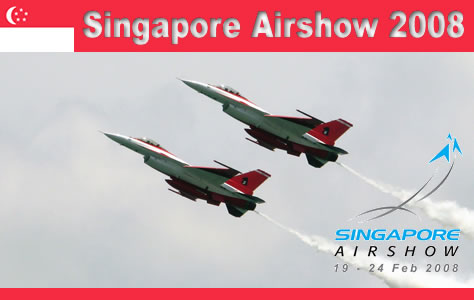
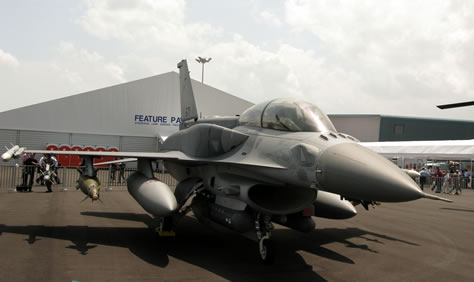
 Another pod unveiled at the show was the Indian SIVA Electronic Support System, developed by the Indian Defence Avionics Research Establishment (DARE). The pod weighs 100 kg can be carried by the Su-30 aircraft on standard rocket attachment point and is interfacing with the aircraft radar warning systems and avionics. The pod covers a forward arc of 60 degrees and provides target accuracy of 1-2 RMS. The SIVA pod will enable the Indian Air Force to conduct electronic reconnaissance missions and support air defense suppression missions by providing accurate targeting for radar suppression missiles and other guided weapons.
Another pod unveiled at the show was the Indian SIVA Electronic Support System, developed by the Indian Defence Avionics Research Establishment (DARE). The pod weighs 100 kg can be carried by the Su-30 aircraft on standard rocket attachment point and is interfacing with the aircraft radar warning systems and avionics. The pod covers a forward arc of 60 degrees and provides target accuracy of 1-2 RMS. The SIVA pod will enable the Indian Air Force to conduct electronic reconnaissance missions and support air defense suppression missions by providing accurate targeting for radar suppression missiles and other guided weapons. Another modernization option looming for the F-16 is the SABRE (Scalable Agile Beam Radar), is a modular radar unveiled by Northrop Grumman. This
Another modernization option looming for the F-16 is the SABRE (Scalable Agile Beam Radar), is a modular radar unveiled by Northrop Grumman. This 
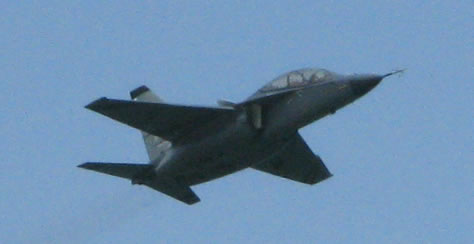

 According to Air Force Gen. Arthur J. Lichte, commander of Air Mobility Command based at Scott Air Force Base, Ill., if the program will progress on track the first test aircraft should be flying by 2010. Air Mobility Command provides the U.S. military with passenger, cargo, tanker and other aircraft support.
According to Air Force Gen. Arthur J. Lichte, commander of Air Mobility Command based at Scott Air Force Base, Ill., if the program will progress on track the first test aircraft should be flying by 2010. Air Mobility Command provides the U.S. military with passenger, cargo, tanker and other aircraft support.





 ranging systems, addressing the needs for compact, high performance vision at the tactical level. The E3010M DI2 is a self contained sensor module specifically designed for integration into imaging systems such as head or helmet mounted displays, rifle sights and small EO/IR surveillance systems. The sensor incorporates a compact, integrated element ensemble, including an SXGA (1280×1024 pixel) electron-bombarded CMOS sensor, high voltage power supply, low voltage power supply, FLASH memory (which also contains image correction parameters). The sensor operates in the 500-900 nm band (GEN II GaAs photocathode) and has a dynamic range supporting ‘twilight to starlight’ conditions. It can also work in daylight condition while the high voltage is switched off, operating in the Near IR (NIR) band.
ranging systems, addressing the needs for compact, high performance vision at the tactical level. The E3010M DI2 is a self contained sensor module specifically designed for integration into imaging systems such as head or helmet mounted displays, rifle sights and small EO/IR surveillance systems. The sensor incorporates a compact, integrated element ensemble, including an SXGA (1280×1024 pixel) electron-bombarded CMOS sensor, high voltage power supply, low voltage power supply, FLASH memory (which also contains image correction parameters). The sensor operates in the 500-900 nm band (GEN II GaAs photocathode) and has a dynamic range supporting ‘twilight to starlight’ conditions. It can also work in daylight condition while the high voltage is switched off, operating in the Near IR (NIR) band.
 Medium Range EO Infrared sensor System (MREO) for FCS Vehicles
Medium Range EO Infrared sensor System (MREO) for FCS Vehicles
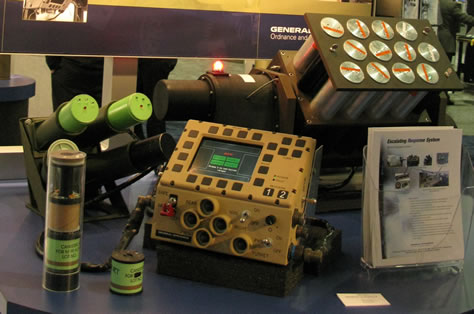
 Taser introduced the Shockwave – a command-activated area denial system. The baseline Shockwave unit is a command activated, 6-shot device that covers a 20-degree arc with 25ft XP TASER electronic control device (ECD) cartridges. When activated, Shockwave units saturate the defended area with the Taser devices which incapacitate personnel with reversible, non-lethal effects of the Taser Neuro Muscular Incapacitation (NMI). When deployed in a stacked configuration, each activation of the fire control button commands the array to sequentially fire rows of TASER cartridges via a smart addressing system . As a protective measure when waves of target sets are encountered, additional 5-second exposures are administered to already expended rows with each firing. Shockwave deployment keeps previously targeted personnel down and incapacitated while subsequent target sets are engaged – a truly scalable defense in depth capability. Multiple Shockwave units can be stacked or ‘daisy-chained ‘ to form longer or wider barriers, or allow for more than one salvo to be fired, as required by the mission. Taser Internaional is planning to release the Shockwave for pilot evaluations in the summer of 2008.
Taser introduced the Shockwave – a command-activated area denial system. The baseline Shockwave unit is a command activated, 6-shot device that covers a 20-degree arc with 25ft XP TASER electronic control device (ECD) cartridges. When activated, Shockwave units saturate the defended area with the Taser devices which incapacitate personnel with reversible, non-lethal effects of the Taser Neuro Muscular Incapacitation (NMI). When deployed in a stacked configuration, each activation of the fire control button commands the array to sequentially fire rows of TASER cartridges via a smart addressing system . As a protective measure when waves of target sets are encountered, additional 5-second exposures are administered to already expended rows with each firing. Shockwave deployment keeps previously targeted personnel down and incapacitated while subsequent target sets are engaged – a truly scalable defense in depth capability. Multiple Shockwave units can be stacked or ‘daisy-chained ‘ to form longer or wider barriers, or allow for more than one salvo to be fired, as required by the mission. Taser Internaional is planning to release the Shockwave for pilot evaluations in the summer of 2008. Among the lethal types of ammunition GD-OTS developed for the 40mm weapon family is the M1001 High Velocity Canister Cartridge (HVCC). This grenade is loaded with 113 flechettes darts (2″ long), which are dispersed after the cartridge is fired, producing a close pattern densely covering an area 100 x133 cm, at a distance of 50 meters, or about 5×5 meter at a distance of 100 meters. The HVCC is designed for use with the MK19 Grenade Machine Gun. It is highly effective even against protected personnel (such as soldiers wearing body armor), the M1001 can be fired from stand-off range or from close range.
Among the lethal types of ammunition GD-OTS developed for the 40mm weapon family is the M1001 High Velocity Canister Cartridge (HVCC). This grenade is loaded with 113 flechettes darts (2″ long), which are dispersed after the cartridge is fired, producing a close pattern densely covering an area 100 x133 cm, at a distance of 50 meters, or about 5×5 meter at a distance of 100 meters. The HVCC is designed for use with the MK19 Grenade Machine Gun. It is highly effective even against protected personnel (such as soldiers wearing body armor), the M1001 can be fired from stand-off range or from close range. Another missile looming on the horizon is the Joint Air-to-Ground Missile (JAGM), building on key technologies developed for the Joint Common Missile (JCM) program cancelled by the U.S. Army few years ago. JAGM will have a range exceeding 20 km, more than doubling the current Hellfire range. This missile will carry an integral internet protocol (IP) based data radio, providing access to ‘targeting during fly’, from multiple sources. The missile will utilize a the tri- mode seeker, matured with the JCM program. This seeker will provide precision targeting capability with fire-and-forget technology against moving or stationary targets in smoke, dust or poor weather. Its warhead will be designed as a common, multi-purpose warhead, effective against a wide target set including armored threats, maneuvering boats, bunkers and other targets including use in urban warfare scenarios.
Another missile looming on the horizon is the Joint Air-to-Ground Missile (JAGM), building on key technologies developed for the Joint Common Missile (JCM) program cancelled by the U.S. Army few years ago. JAGM will have a range exceeding 20 km, more than doubling the current Hellfire range. This missile will carry an integral internet protocol (IP) based data radio, providing access to ‘targeting during fly’, from multiple sources. The missile will utilize a the tri- mode seeker, matured with the JCM program. This seeker will provide precision targeting capability with fire-and-forget technology against moving or stationary targets in smoke, dust or poor weather. Its warhead will be designed as a common, multi-purpose warhead, effective against a wide target set including armored threats, maneuvering boats, bunkers and other targets including use in urban warfare scenarios. Another ‘Hellfire extender’ is the P44/P42 offered by Lockheed Martin. This missile was developed internally funded by its own resources. This missile will enable ground forces to extend the effect currently generated by the Hellfire II missile over a range of more than 70 km. These missile can be deployed and fire from an MLRS or HIMARS rocket carrier. With P44/42, an MLRS unit will be able to score a direct hit at a moving target traveling at a distance of 40 km within 2.9 minutes.
Another ‘Hellfire extender’ is the P44/P42 offered by Lockheed Martin. This missile was developed internally funded by its own resources. This missile will enable ground forces to extend the effect currently generated by the Hellfire II missile over a range of more than 70 km. These missile can be deployed and fire from an MLRS or HIMARS rocket carrier. With P44/42, an MLRS unit will be able to score a direct hit at a moving target traveling at a distance of 40 km within 2.9 minutes.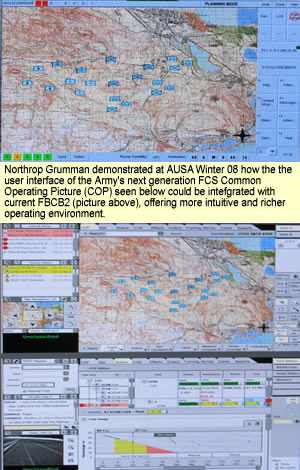

 On-The-Move Satcom Terminals
On-The-Move Satcom Terminals


 To place the situation in geo-demographic perspective: about 30 million Kurds live in the mountainous regions of Iran, Iraq, Syria and Turkey, making them the Middle East’s largest ethnic group without a state. Of these, some 15 million Kurds living in southeastern Turkey have warned that a prolonged Turkish incursion into Iraq would exacerbate tensions with the Ankara government.
To place the situation in geo-demographic perspective: about 30 million Kurds live in the mountainous regions of Iran, Iraq, Syria and Turkey, making them the Middle East’s largest ethnic group without a state. Of these, some 15 million Kurds living in southeastern Turkey have warned that a prolonged Turkish incursion into Iraq would exacerbate tensions with the Ankara government. While the manned combat vehicle of the FCS family of weapons has yet to debut publicly, substantial progress has been made already, with FCS family of vehicles with the first platform – then
While the manned combat vehicle of the FCS family of weapons has yet to debut publicly, substantial progress has been made already, with FCS family of vehicles with the first platform – then 

 Unsolicited development by BAE Systems (RG33) and Oshkosh (HEMTT PLSR) were addressing the urgent need for heavy recovery vehicles in Iraq and Afghanistan, in support of heavy armored vehicles which are operating intensively and subjected to frequent attacks. Current recovery assets are sometime helpless when called to recover a disabled forty-ton MRAP, leaving the job for the M-88 Hercules, originally designed to support the heavy armor. Hercules has provided unmatched capabilities during Operation Iraqi Freedom. To date 210 Hercules vehicles have been fielded against a total U.S. Army requirement of 595 vehicles. A total of 68 have been fielded to the U.S. Marine Corps, which has decided on the single M88A2 configuration.The new heavy recovery vehicle is based on the RG-33 MRAP platform, equipped with a crane, winch and lifting bars. The hydraulic, telescopic crane can lift up to 40 ton, the towing drum is capable of horizontally towing the same weight while the telescopic lifting arms are capable of lifting up to 25 tons. This arm is designed for insertion under a disabled vehicle, lifting it by supporting the front or rear axle. A full coverage of MRAP and other heavy armored vehicles is available in our recent title “
Unsolicited development by BAE Systems (RG33) and Oshkosh (HEMTT PLSR) were addressing the urgent need for heavy recovery vehicles in Iraq and Afghanistan, in support of heavy armored vehicles which are operating intensively and subjected to frequent attacks. Current recovery assets are sometime helpless when called to recover a disabled forty-ton MRAP, leaving the job for the M-88 Hercules, originally designed to support the heavy armor. Hercules has provided unmatched capabilities during Operation Iraqi Freedom. To date 210 Hercules vehicles have been fielded against a total U.S. Army requirement of 595 vehicles. A total of 68 have been fielded to the U.S. Marine Corps, which has decided on the single M88A2 configuration.The new heavy recovery vehicle is based on the RG-33 MRAP platform, equipped with a crane, winch and lifting bars. The hydraulic, telescopic crane can lift up to 40 ton, the towing drum is capable of horizontally towing the same weight while the telescopic lifting arms are capable of lifting up to 25 tons. This arm is designed for insertion under a disabled vehicle, lifting it by supporting the front or rear axle. A full coverage of MRAP and other heavy armored vehicles is available in our recent title “
 Another recovery vehicle unveiled here was the maintenance and recovery vehicle (MRV) version of the Stryker, fitted with a winch, pulling more than 40,000 lbf, crane capable of lifting 16.5 tons and an hydraulically operated earth anchor made of ballistic steel, which also adds to frontal protection. The vehicle is designed to support Stryker combat brigade teams, performing recovery operations, lifting, and Stryker vehicle fleet support wherever the brigade deploy.
Another recovery vehicle unveiled here was the maintenance and recovery vehicle (MRV) version of the Stryker, fitted with a winch, pulling more than 40,000 lbf, crane capable of lifting 16.5 tons and an hydraulically operated earth anchor made of ballistic steel, which also adds to frontal protection. The vehicle is designed to support Stryker combat brigade teams, performing recovery operations, lifting, and Stryker vehicle fleet support wherever the brigade deploy.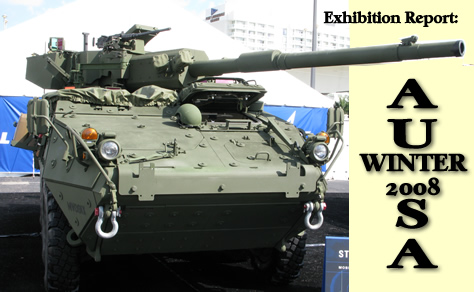
 One of the most visible changes was the high priority that all defense integrators and vehicle manufacturers are placing on the Joint Light Tactical Vehicle program – a ‘winner takes all’ multi-billion dollar opportunity to be grabbed by a single team in the next decade. While the final decision on the winner design and team is expected only by 2013, industry teams are already in battling to win the technology demonstration and system development phases. (
One of the most visible changes was the high priority that all defense integrators and vehicle manufacturers are placing on the Joint Light Tactical Vehicle program – a ‘winner takes all’ multi-billion dollar opportunity to be grabbed by a single team in the next decade. While the final decision on the winner design and team is expected only by 2013, industry teams are already in battling to win the technology demonstration and system development phases. ( While JLTV is making progress, the military continues to spend huge amounts on the procurement of MRAP, despite their limitations (regarding tactical maneuverability and strategic mobility). Another issue realized with current MRAP deployments was the gap in the ability to recovery disabled MRAPs in theater. While the Army has yet to publish a specific requirement for heavy recovery assets to be able to support these beasts, both Oshkosh and BAE Systems are preparing to submit their offers for such vehicles, two of which were on display at AUSA Winter. (
While JLTV is making progress, the military continues to spend huge amounts on the procurement of MRAP, despite their limitations (regarding tactical maneuverability and strategic mobility). Another issue realized with current MRAP deployments was the gap in the ability to recovery disabled MRAPs in theater. While the Army has yet to publish a specific requirement for heavy recovery assets to be able to support these beasts, both Oshkosh and BAE Systems are preparing to submit their offers for such vehicles, two of which were on display at AUSA Winter. ( Much progress is being made with the Army’s Future Combat Systems; Two of the four unmanned systems included in the FCS family of systems are being released as part of ‘Spiral 1’, to support the current force. More systems, including the ground unattended sensors will follow soon and the Non Line of Sight – Cannon (NLOS-C) – the first of eight manned vehicle platforms will roll out of BAE production line this year. (link to FCS family of vehicles article) Progress was made with the lightweight 120 gun associated with another vehicle, as well as with the mortar system, missile etc. At the network level, AUSA Winter provided the opportunity to demonstrate the operability of the Joint Tactical Radio System (JTRS) Network Centric waveform, a critical element in the formation of the overarching future FCS network and the Army’s future Warfighter Information Network – Tactical (WIN-T) networking infrastructure. One of the most critical elements of this network will be Satcom on the Move, an area which attracted much interest from visitors and exhibitors alike. (
Much progress is being made with the Army’s Future Combat Systems; Two of the four unmanned systems included in the FCS family of systems are being released as part of ‘Spiral 1’, to support the current force. More systems, including the ground unattended sensors will follow soon and the Non Line of Sight – Cannon (NLOS-C) – the first of eight manned vehicle platforms will roll out of BAE production line this year. (link to FCS family of vehicles article) Progress was made with the lightweight 120 gun associated with another vehicle, as well as with the mortar system, missile etc. At the network level, AUSA Winter provided the opportunity to demonstrate the operability of the Joint Tactical Radio System (JTRS) Network Centric waveform, a critical element in the formation of the overarching future FCS network and the Army’s future Warfighter Information Network – Tactical (WIN-T) networking infrastructure. One of the most critical elements of this network will be Satcom on the Move, an area which attracted much interest from visitors and exhibitors alike. ( Some of the weapons displayed at AUSA Winter highlighted the continued trend toward measured effects enabling precision attack at extended range. New weapons such as the P44/42 and DAGR, both developed by Lockheed Martin are examples of the two extremes – carrying the effect currently provided by the Hellfire missile to much longer range (P-44/42) or to shorter range, and controlled collateral damage, by the new DGAR guided rocket. New warheads are also offered for the modern missiles, optimizing the weapon to achieve the desired effects against a wide range of threats. New sensors capable of better identifying targets from longer ranges and in difficult conditions, are supporting the weapons providing real-time forensic support needed for rapid targeting and engagement through an ever short sensor-to-shooter process. (
Some of the weapons displayed at AUSA Winter highlighted the continued trend toward measured effects enabling precision attack at extended range. New weapons such as the P44/42 and DAGR, both developed by Lockheed Martin are examples of the two extremes – carrying the effect currently provided by the Hellfire missile to much longer range (P-44/42) or to shorter range, and controlled collateral damage, by the new DGAR guided rocket. New warheads are also offered for the modern missiles, optimizing the weapon to achieve the desired effects against a wide range of threats. New sensors capable of better identifying targets from longer ranges and in difficult conditions, are supporting the weapons providing real-time forensic support needed for rapid targeting and engagement through an ever short sensor-to-shooter process. (












